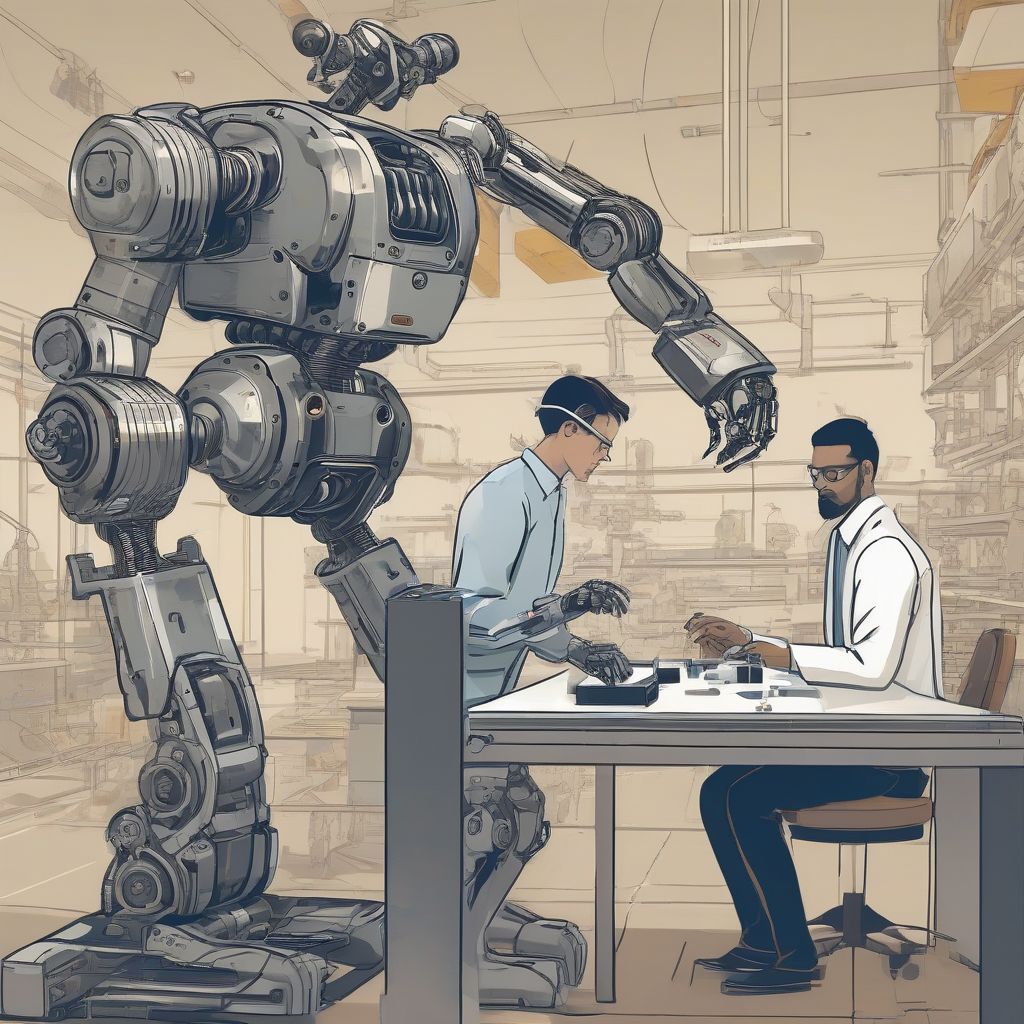Imagine a world where robots work alongside humans, not as replacements, but as intelligent partners, amplifying our capabilities and pushing the boundaries of what’s possible. This is not science fiction; this is the exciting reality unfolding before our very eyes as robotics and human-machine collaboration rapidly advance.
The Evolving Landscape of Robotics
Robotics is no longer confined to the realm of automated machines in factories. We’re witnessing a remarkable evolution where robots are becoming increasingly sophisticated, versatile, and capable of interacting with the world in ways that were once unimaginable. From self-driving cars to surgical robots and even AI-powered assistants in our homes, robotics is permeating every aspect of our lives.
Human-Machine Collaboration: A Synergy for Success
At the heart of this robotic revolution lies the concept of human-machine collaboration. It’s not about robots replacing humans, but about creating a synergistic partnership where the strengths of each are leveraged to achieve extraordinary outcomes.
Here’s why this collaboration is so powerful:
- Humans excel at:
- Creativity and problem-solving
- Critical thinking and judgment
- Adaptability to dynamic situations
- Emotional intelligence and empathy
- Robots excel at:
- Precision and repeatability
- Data processing and analysis
- Handling hazardous or tedious tasks
- Operating tirelessly without fatigue
 Human-Robot Collaboration
Human-Robot Collaboration
By combining these complementary skills, we can achieve levels of efficiency, productivity, and innovation that were previously unattainable.
Shaping the Future: Applications Across Industries
The potential applications of robotics and human-machine collaboration are vast and continue to expand at an astonishing pace. Let’s explore how this transformative partnership is already reshaping various industries:
1. Manufacturing:
Collaborative robots, or “cobots,” are transforming factory floors. These robots work alongside human operators, handling repetitive tasks, heavy lifting, and intricate assembly processes. This collaboration not only boosts efficiency but also enhances worker safety by taking over potentially dangerous operations.
2. Healthcare:
The healthcare industry is witnessing a robotic revolution. Surgical robots enable minimally invasive procedures with greater precision, while robotic exoskeletons assist patients with mobility impairments. AI-powered robots are also being used in diagnostics, drug discovery, and even patient care, freeing up human healthcare professionals to focus on more complex and empathetic aspects of patient care.
3. Logistics and Transportation:
From automated guided vehicles (AGVs) in warehouses to delivery drones and self-driving trucks, robotics is streamlining the entire logistics and transportation chain. This improves efficiency, reduces costs, and minimizes the risk of human error, making our supply chains more resilient and responsive.
4. Customer Service:
AI-powered chatbots and virtual assistants are becoming increasingly sophisticated in handling customer inquiries, providing 24/7 support, and resolving issues quickly and efficiently. This frees up human customer service representatives to handle more complex and nuanced interactions, improving customer satisfaction and loyalty.
Addressing the Challenges: A Human-Centric Approach
While the potential benefits of robotics and human-machine collaboration are immense, it’s crucial to address the challenges that come with this technological advancement:
- Job displacement: As robots automate certain tasks, concerns about job displacement are understandable. However, history has shown that technological advancements often create new job opportunities. The key is to focus on upskilling and retraining the workforce to thrive in this evolving landscape.
- Ethical considerations: As robots become more autonomous, it’s essential to establish clear ethical guidelines for their development and deployment. This ensures responsible innovation that prioritizes human safety, privacy, and well-being.
- Data security and privacy: With robots collecting and processing vast amounts of data, ensuring data security and privacy is paramount. Robust security measures and ethical data handling practices are crucial to building trust and mitigating potential risks.
The Future of Work: Embracing Collaboration and Adaptability
The future of work is undoubtedly intertwined with the rise of robotics and human-machine collaboration. Instead of fearing this transformation, we must embrace the opportunities it presents.
- Upskilling and reskilling: Investing in education and training programs that equip workers with the skills needed to thrive in a tech-driven workplace is essential. This includes developing skills in areas such as robotics, AI, data analytics, and human-robot interaction.
- Fostering a culture of lifelong learning: The rapid pace of technological advancement necessitates a shift towards continuous learning. Encouraging employees to embrace new technologies and adapt their skills will be crucial for long-term success.
- Prioritizing human-centered design: As we design and implement robotic systems, it’s vital to prioritize a human-centered approach. This means focusing on creating technologies that augment human capabilities, enhance their work experience, and promote their well-being.
Conclusion: A Future Shaped by Collaboration
The convergence of robotics and human-machine collaboration is poised to redefine the world as we know it. By embracing this transformation with a focus on ethical considerations, upskilling our workforce, and fostering a culture of collaboration, we can unlock unprecedented levels of productivity, innovation, and societal progress. The future is collaborative, and it’s filled with exciting possibilities.
[amazon bestseller=”robotics”]
